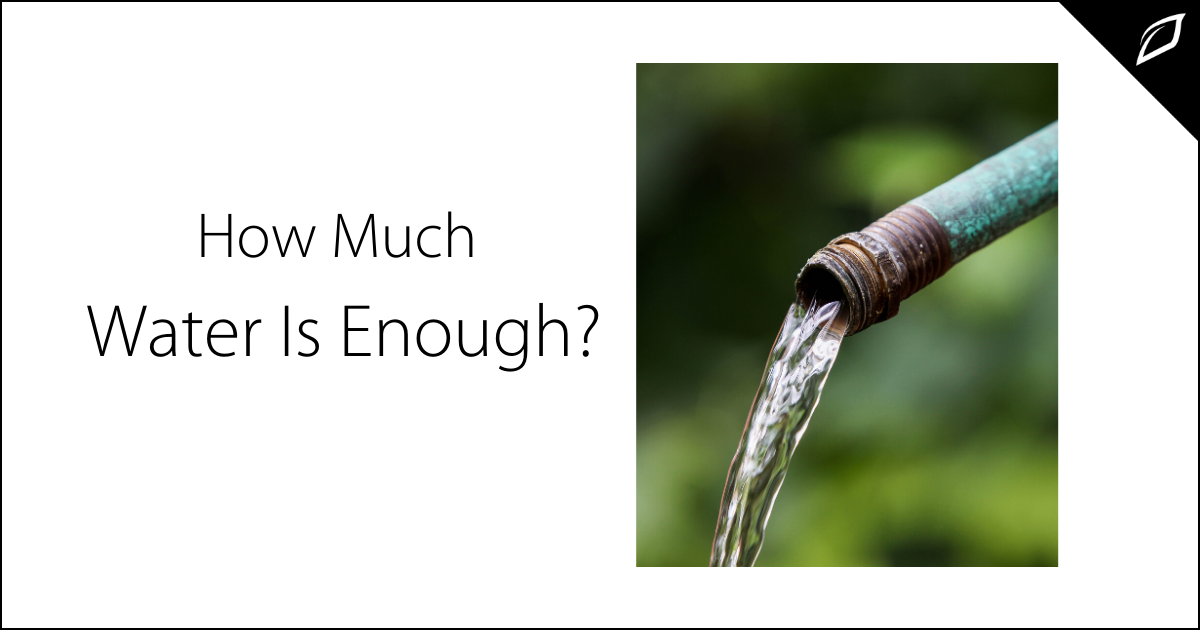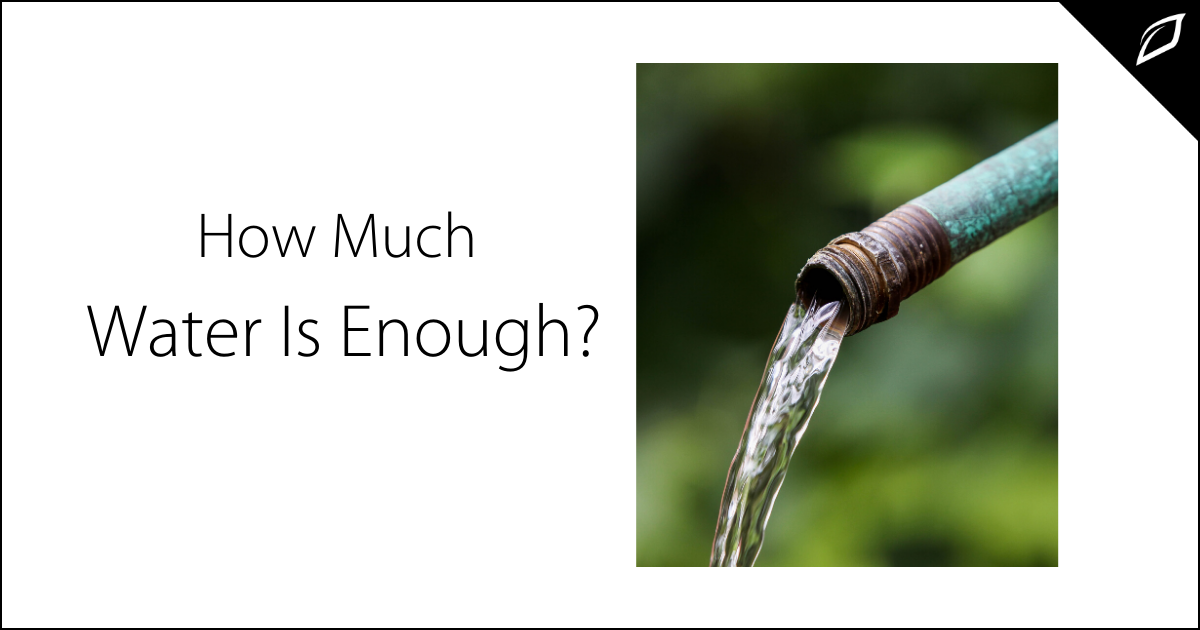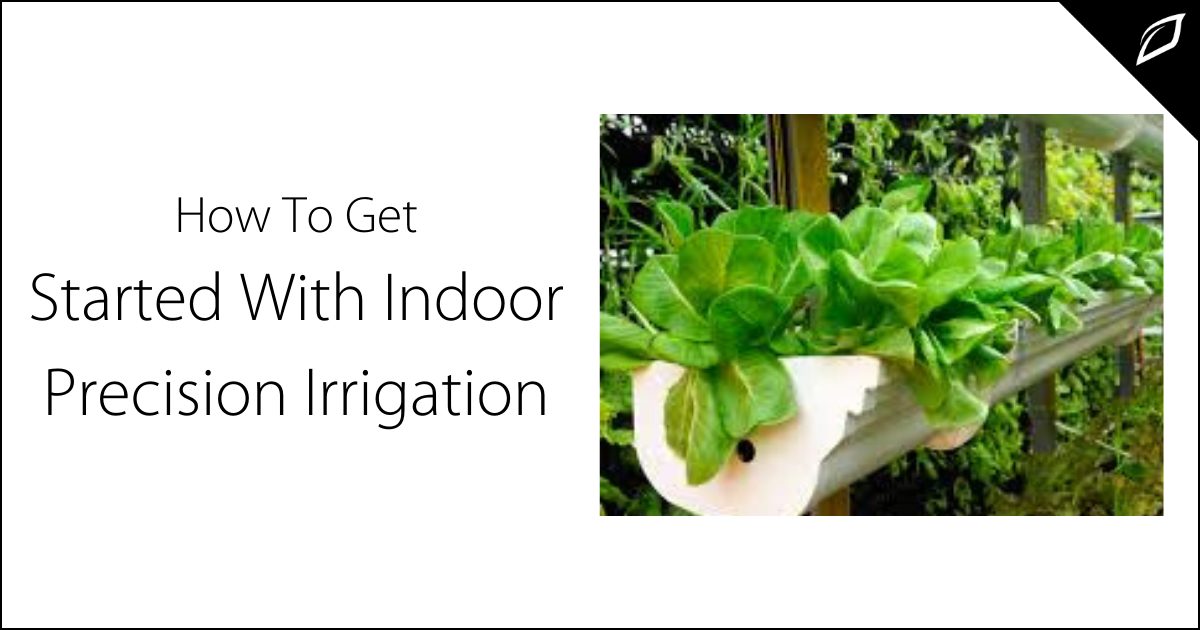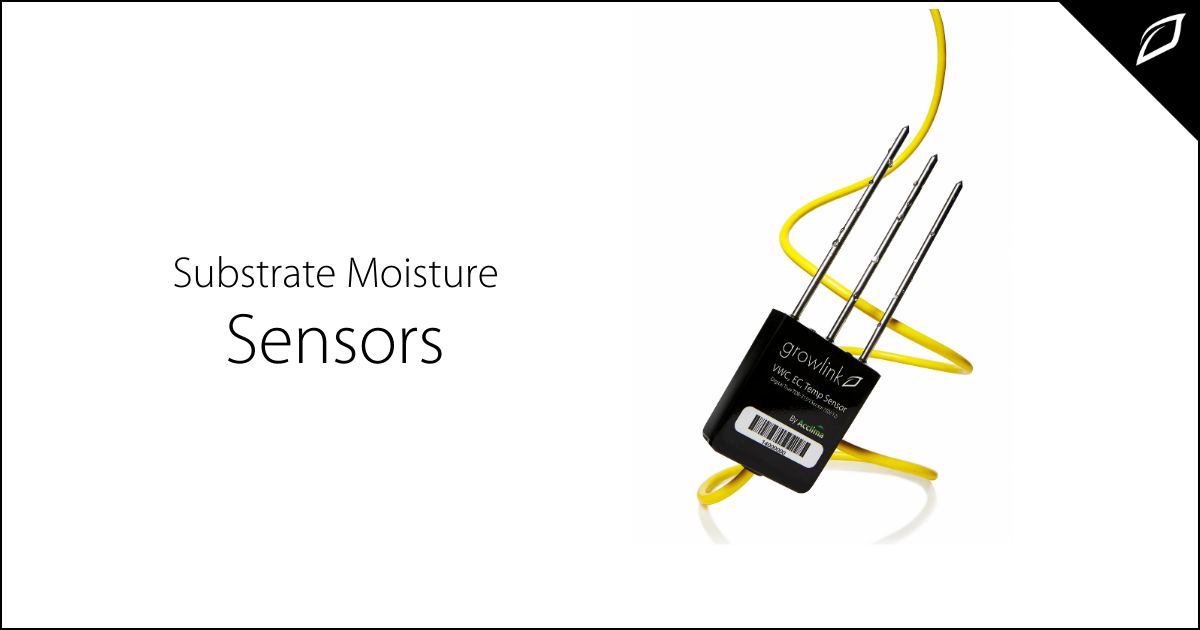How To Get Started With Indoor Precision Irrigation
The development of reliable plastic systems, paired with smart sensors and monitors, offers a significant opportunity for growers to enhance...


Promoting Healthy Plant Growth While Minimizing Waste
Water is life, and as with all living things, a plant without access to the right amount of water will become ill or die. But too much water isn’t a good thing either, and over-irrigation can be harmful in a number of ways. If a plant’s roots are submerged in water due to oversaturated soil, they can’t absorb oxygen, and overwatering is a common cause of plant death. From an environmental standpoint, clean, fresh water is a scarce resource that can’t afford to be wasted, and overwatering also contributes to harmful fertilizer runoff. So, with all that in mind, just how much water is actually enough?
How Much Water Do Plants Really Need?
While there isn’t a lot of hard data on the exact quantities of water different types of plants need for healthy growth, there is a lot of anecdotal evidence that indicates it isn’t all that much. It turns out plants are far more efficient than science previously thought, which is good news for everyone.
Greenhouse Magazine suggests just a tablespoon of water per day as a good baseline for the average plant[1]. That baseline number is obviously a wide generalization, but it demonstrates just how little water many plants actually need.
But plants aren’t machines, and as such their needs vary from day to day based on environmental conditions and characteristic differences between individuals. Plants with large, thin leaves will generally need more water. Likewise, larger plants will almost always require more water than smaller ones, even of the same species. Dormant periods, periods of heavy growth, and environmental factors like temperature and humidity also all impact a plant’s water needs.
That means if optimal growth and minimized water use are the goals, it isn’t enough to just pick a static irrigation volume and apply it day in and day out, across the board. While a greenhouse environment can be controlled to a much greater level than an outdoor one, it’s still important to recognize that water needs are dynamic and to plan irrigation accordingly.
Taking Measurements to Determine Water Requirements
To ensure a truly optimal irrigation strategy, measurements can be taken to determine the water needs of different types of plants in different conditions. There are a number of factors that determine the ideal amount of water, including temperature, plant size, and evapotranspiration – or the amount of water that evaporates out of the soil. Taking the time to actually measure a plant’s water requirements takes out a lot of the guesswork that these factors introduce.
Weight is one simple way to determine the water needs for any specific plant. Since water has a known weight to volume ratio, by weighing plants immediately after watering and then again after 24 hours, the exact amount of water consumed can be determined. That process can then be repeated on days with differing environmental conditions to determine water needs across different temperatures and humidity levels.
Soil moisture level is another measurement that can provide important information on water use. By using moisture sensors embedded in a plant’s soil, water use can be tracked in real time, providing both extremely accurate measurements of water requirements and allowing water application to be dialed in precisely.
Systems for Irrigation Management
Automating irrigation to ensure optimal water use is the best way to ensure plants get the water they need to grow while limiting excess watering and the waste and risks that come along with it. Once water needs have been measured to a reasonable degree of accuracy, irrigation systems can be set to deliver the required volume of water to keep soil conditions as close to ideal as possible.
Carefully measuring the water flow levels each plant receives from passive irrigations systems like drip-feed and sprinkler systems is absolutely critical to fine-tuning irrigation. Once known, a properly dialed-in delivery setting can be set. But these kinds of passive systems will still deliver a set amount of water regardless of actual condition changes, leaving significant room for improvement in water conservation and plant care.
Soil moisture probes provide an alternative control option, and irrigation systems can be designed to provide water flow based on the actual moisture levels detected in soil. These types of automated systems can be set to operate on a continuous basis based on changes detected in the soil, or to water in set intervals, but only if moisture levels fall below pre-set thresholds. This kind of high-tech automation allows the delivery of precise amounts of water, minimizing or eliminating waste altogether.
Benefits of Careful Water Management
The upsides of taking carefully measured watering seriously are myriad. Most obviously, overwatered plants aren’t healthy plants, so well managed irrigation contributes greatly to plant health. Combine that with a reduction on the monthly water bill, and it’s clear that avoiding excess watering is of great importance, especially to commercial growers.
Environmentally, minimizing water use helps to reduce stress on the environment in a number of ways. Fresh water is a concern the world over, and a number of states already suffer from a growing water shortage in certain regions of the U.S. Careful water use is key to ensuring that issues with fresh water access don’t reach crisis levels in the future.
Overwatered soil also eventually leeches, and many of the chemicals and elements in synthetic fertilizers are highly destructive not only in the ground but to nearby water sources as well. Careful watering helps minimize that runoff, keeping synthetic chemicals and algae-promoting excess nutrients from harming the ecosystems that runoff comes into contact with.
Water is important for all living things, plant and animal alike, so it’s important to treat it with respect. Water-consciousness has grown significantly over the past couple of decades, and it’s now understood that what was once seen as a near limitless resource is, in fact, very finite.
Luckily, it turns out plants probably aren’t as water-hungry as we think, and many people actually water their plants too much. That means that whether it’s in a greenhouse or an apartment, dialing back on the water not only helps with conservation and environmental issues, it also helps produce healthier plants.
It takes work to figure out how much water plants actually need and then to tailor irrigation to deliver it, but that work is worthwhile, especially in larger-volume operations where reduced water use and healthier crop yields can mean significant differences in the bottom line. But even just a single plant will benefit from more careful, more accurate watering, and in addition to a happier plant, the long-term benefits of putting a little extra thought into water use can’t be overstated.

The development of reliable plastic systems, paired with smart sensors and monitors, offers a significant opportunity for growers to enhance...

Hailing from the great Pacific Northwest, Jim Stephens embodies the essence of the region. His love of the outdoors and passion for farming...

Agricultural technology constantly evolves by refining processes, upgrading systems, and improving hardware and software. Substrates, the medium your...